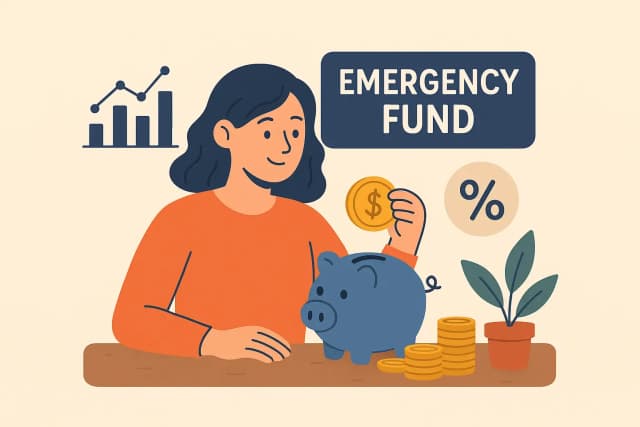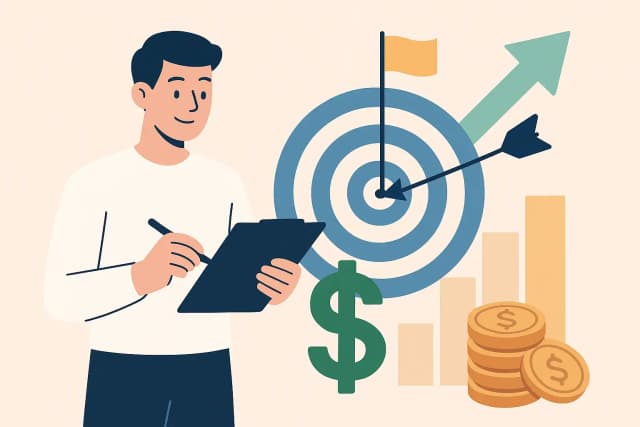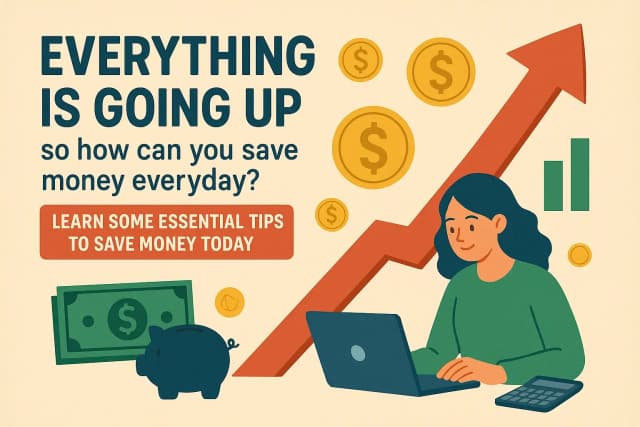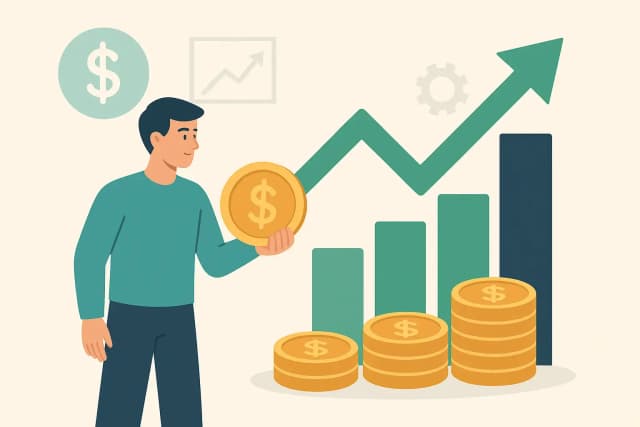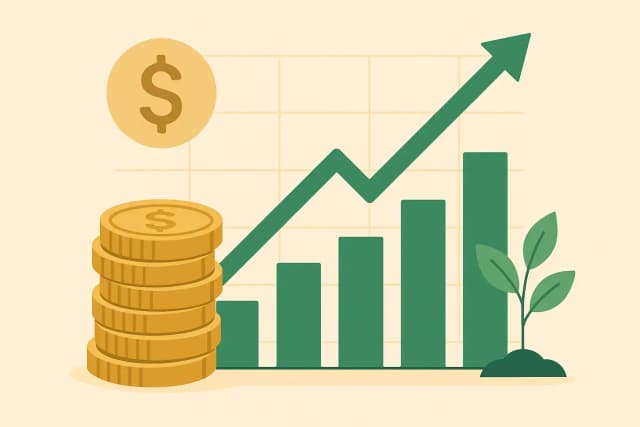Debt Reduction
Loans
How To Pay Off Debt Fast With low Income
Debt can be a good way to finance large asset purchases, but too much debt or debt on certain things can be very costly. An example of good debt is when you use it to purchase an asset like a house. A house typically gets paid off over a 30-year period, and a mortgage is almost always required as most people would not have the required money to purchase a house outright. The other advantage of debt for a house is that the increase that is made on a house is on the full amount of money, so if the house is making more money than your interest rate, then you are gaining money on the overall value.
Where debt becomes a problem is when you are overstretched or close to your borrowing limit. 30 years is a long time, and life will throw you curveballs during that period that means you need to be able to pay the loan when things get tough.
Other forms of debt can have high interest rates or be for assets that depreciate (like a car or household items), further increasing the costs of owning those items. Using debt correctly and avoiding bad debt could save you thousands of dollars a year.
To further strengthen your financial health, it can be helpful to regularly review your existing debts and seek opportunities to refinance or renegotiate terms where possible. Comparing interest rates across providers, especially for significant debts such as mortgages or car loans, may lead to options that can lower your monthly payments or overall interest burden. Avoid accumulating debt for non-essential purchases, as these can quickly become financial drains, especially when interest rates are high.
Developing a clear repayment plan is essential. Prioritise paying down debts with the highest interest rates first—commonly credit cards or short-term loans—while maintaining minimum payments on others. This strategy, often called the “avalanche method,” allows you to minimise the total interest paid over-time. Alternatively, some people find success with the “snowball method,” paying off the smallest debts first for motivational wins before tackling larger obligations.
Most importantly, always be aware of your borrowing limits and resist the temptation to take on more debt than you can comfortably manage. Setting up emergency savings and maintaining a buffer in your budget ensure you can continue servicing your loans even when life takes an unexpected turn.
Mortgage Debt
When you take out a mortgage you are only paying a very small amount of the principal amount at the beginning. That means after the First 10 years, then you will have paid only about 19% of the principal amount. On a 500,000 loan that’s only $93,000.
If you take out a smaller mortgage and pay it back more quickly, then you can save a lot of money in interest be in a much more secure financial position. You might way why not take out a mortgage over a shorter period. The answer is it allows you to get ahead of your repayments, which means if you ever end up in a tight spot financially (you lose your job or end up on only 1 income), then you don’t have to worry about being behind on your repayments.
Say for example you had a $500,000 mortgage if you paid an extra $1000 per month then your loan would be paid back in just under 17 years and you would save $227,000 in interest (if your interest rate was 5%). If you put an extra 2000 per month, the loan would be paid of in just under 12 years and you would save over 300,000 in interest. That money can then be put towards other financial goals or investments.
Your situation may be different though if you live in the USA for example where 30 year fixed rates are common. In those scenario, paying off your loan earlier will depend on your interest rate, and if you managed to get a low rate, then investing your savings may be a more attractive option over time.
Its also possible you can do a bit of both, prioritizing paying off the loan in the first 5 years to reduce it down (and the risk) and then investing after that. There are many ways to achieve financial security, you just need to work out which is right for you. Paying your mortgage down also provides a buffer in case of interest rates go up or in case you lose some or all of your income for a period of time. This can be a real life-saver should that occur.
Credit Card Debt
Interest rates on credit cards are often substantial, sometimes exceeding 20%. Consequently, if you carry a balance, it is advisable to prioritise reducing your credit card debt or negotiating a lower interest rate. Strategies such as balance transfers or other debt consolidation methods can be effective in achieving a more favorable rate.
When used responsibly, credit cards can serve as valuable financial tools, particularly when balances are paid in full within the interest-free period. Additionally, it is prudent to select cards with minimal or no fees. If a credit card is to tempting to have, then it might be better to only have a debit card instead. If you regularly use a debit card make sure you only keep a minimum amount in the account linked to the card for security reasons. Additionally with both types of cards (debt and credit) know how to disable the card using you banking app in case you lose it or the details are compromised.
Car Debt
Loans on cars are usually lower than those on credit cards, but more than that of a mortgage. Having a loan on a car increases the overall cost of the car, as the value of the car goes down over time. If you take out a car loan of $50,000 at 7% interest, then the car will end up costing over $59,400 over 5 years. Say the car is worth $35,000 at the end of 5 years, then with depreciation each year would be about $3,000 per year. If you have a loan, then the cost would be nearly $5,000 per year for the first 5 years.
Other Debt
Using debt to finance household items or holidays can cost a lot of interest, and you should avoid this wherever possible or look for interest free deals (be very careful about interest free deals and always read the fine print, as these can come with additional fees).
Effective debt management doesn’t just mean minimising your repayments—it’s also about understanding the long-term consequences of borrowing and making strategic decisions that balance present needs with future goals. Prioritising high-interest debts, such as credit cards and personal loans, can free up cash flow and prevent financial stress down the line. Consider setting up automatic payments to avoid late fees and paying more than the minimum required wherever possible, so you chip away at the principal more rapidly.
It’s also wise to periodically review all your outstanding debts and seek opportunities to refinance or consolidate if better rates become available. This approach can streamline your monthly expenses and make it easier to stay on top of your financial commitments. Remember, not all debt is inherently bad—used wisely, it can help you take advantage of investment opportunities or smooth out life’s inevitable bumps. The key is to keep debt at manageable levels and ensure that each borrowing decision fits within your broader financial plan.
Disclaimer - The information provided on this article is of a general nature and does not take into account your personal financial situation, needs, or objectives. It is intended for educational and informational purposes only and should not be considered as financial advice. Before making any financial decisions, you should consider whether the information is appropriate to your needs and seek independent advice from a licensed financial adviser. While all reasonable care has been taken in the preparation of this information, we make no representations or warranties as to the accuracy, completeness, or currency of the content. We are not licensed financial advisers under the Corporations Act 2001. Any reference to financial products, strategies, or investments is general in nature and is not intended to be a recommendation. Past performance is not a reliable indicator of future performance.

